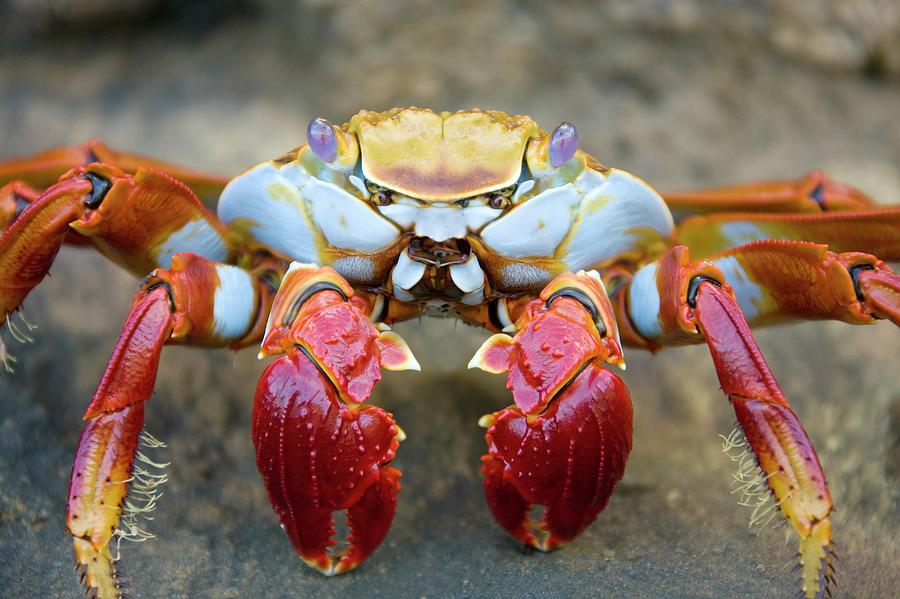
Sally Lightfoot Crab Photograph by Steve Allen/science Photo Library
Grapsus grapsus Sally Lightfoot crab By Nick Miller Geographic Range Habitat Physical Description Development Reproduction Lifespan/Longevity Behavior Communication and Perception Food Habits Predation Ecosystem Roles Economic Importance for Humans: Positive Economic Importance for Humans: Negative Conservation Status Contributors References
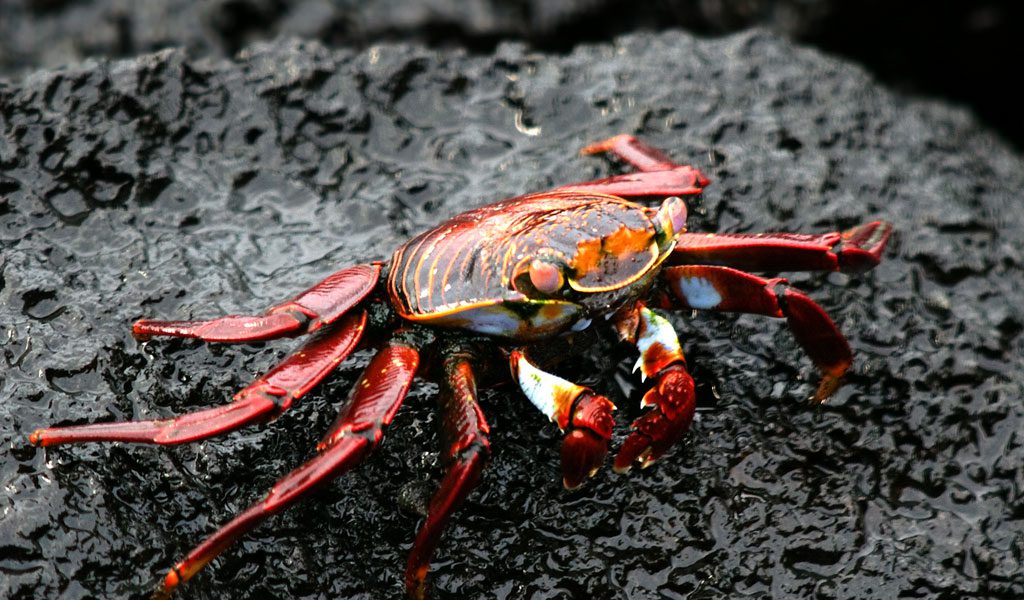
Sally Lightfoot Crab Facts, Diet & Habitat Information
The Sally Lightfoot Crab is also known as the Nimble Spray, Short, or Urchin Crab. It has a brown body, with orange to yellow rings on the legs. It actually belongs to a family of shore crabs, however, it is less likely than the other genera to go on land. Its carapace is very flat. which allows it to hide in small crevices within rock work.

Sally Lightfoot Crab Galapagos Islands
The sally lightfoot crabs are shaped like typical crabs. They possess a shell that grows three to five inches long and they have five pairs of legs. The non-clawed legs are flat and broad with tipped ends. The adult sally lightfoot crabs are usually of deep red color, pink or yellow.

Sally Lightfoot Crab
Pictured here is the Sally lightfoot crab, Grapsus grapsus. Today, over 40 World Heritage sites are listed for their marine values. Together, they can be considered the "Crown Jewels of our Ocean" and are recognized for their outstanding beauty, exceptional biodiversity, or unique ecological, biological, or geological processes.
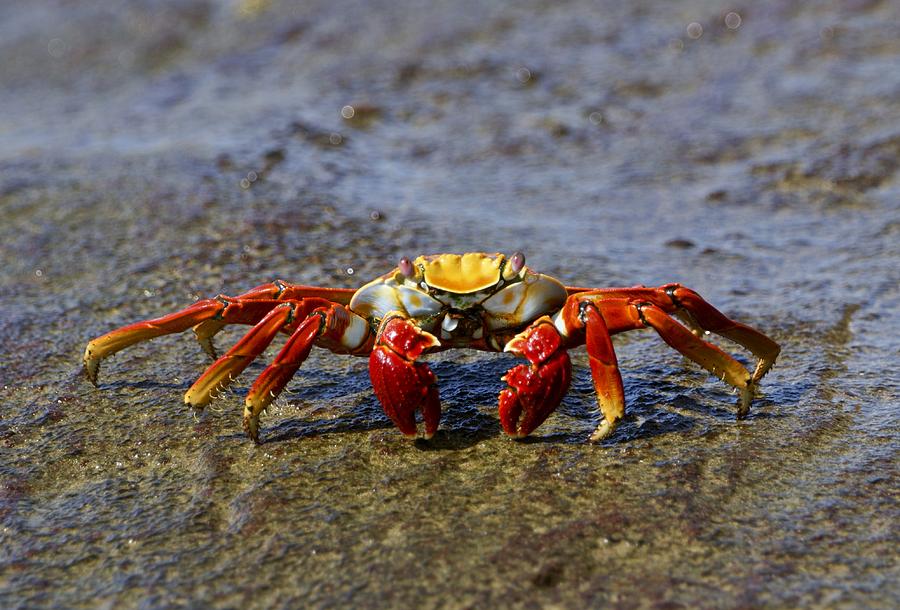
Vibrant Sally Lightfoot Crab Photograph by Brian Kamprath Pixels
Sally Lightfoot Crabs Are One Of The Few Species Of Saltwater Crabs That Inhabit The Galapagos Islands But their ability to move quickly is crucial to their existence. The Sally Lightfoot crab must be incredibly handy to survive.
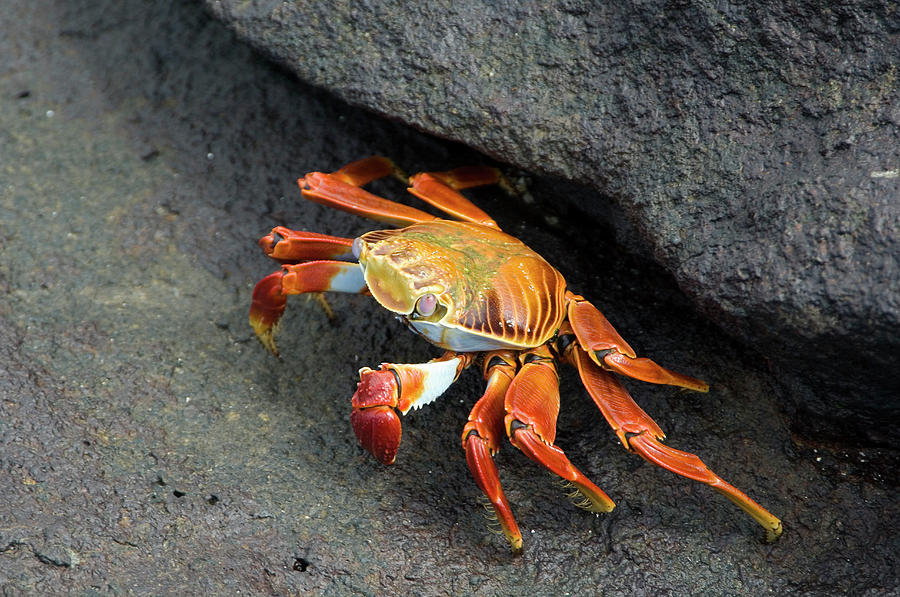
Sally Lightfoot Crab Photograph by Daniel Sambraus/science Photo Library
It is known as the red rock crab, or, along with other crabs such as Percnon gibbesi, as the Sally Lightfoot crab. Distribution. Grapsus grapsus is found along the Pacific coast of Mexico, Central America, and South America (as far south as northern Peru), and on nearby islands, including the Galápagos Islands.

The Dance of the Sally Lightfoot Crab, learn about their survival
Percnon gibbesi is a species of crab. [1] [3] It is one of at least two species commonly called Sally Lightfoot (the other being the semi-terrestrial Grapsus grapsus from the Pacific coast of the Americas), and is also referred to as the nimble spray crab [2] or urchin crab. [4]
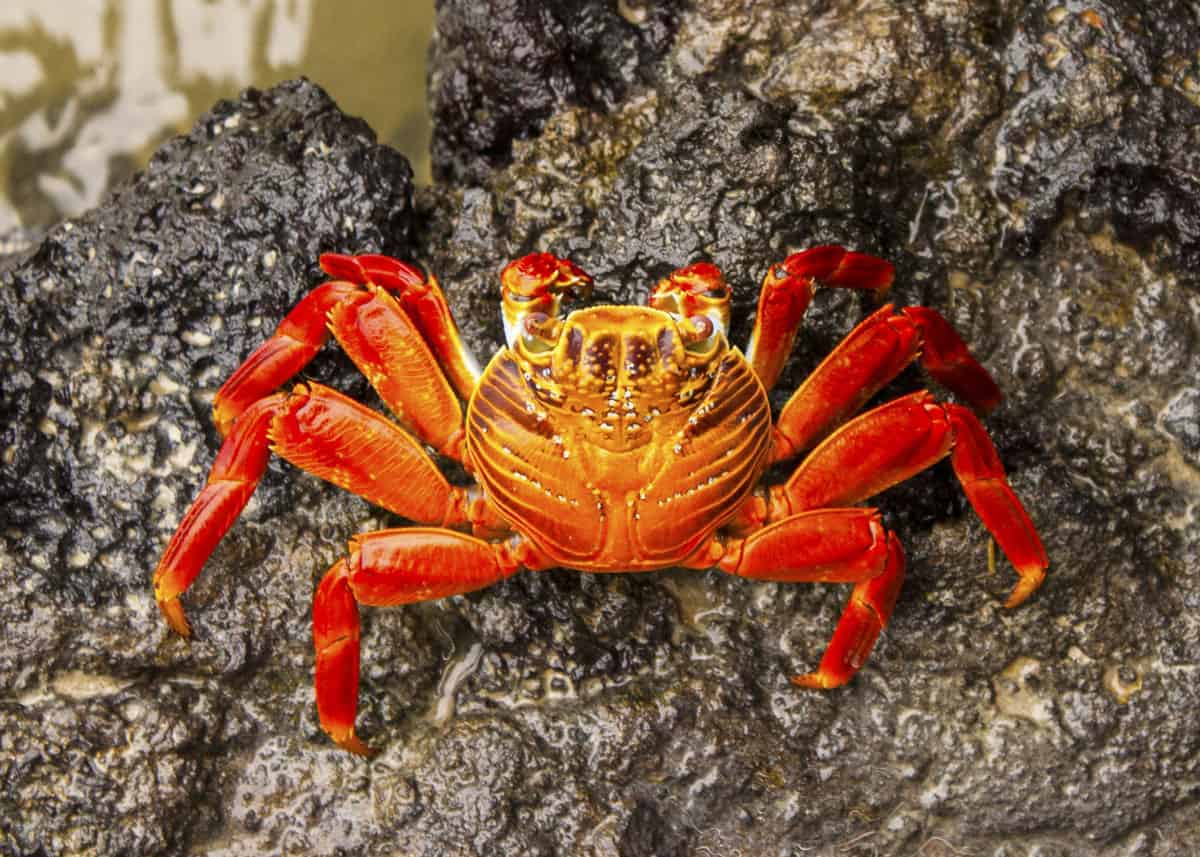
22 Sally Lightfoot Crab Facts Guide to Galapagos's Grapsus grapsus
The Sally Lightfoot crab ( Percnon gibbesi )—not to be confused with Grapsus grapsus, a common semi-terrestrial crab species found along the Pacific coast of the Americas and on the Galapagos Islands that shares this same common name—is a small (reaching approximately 4 inches in diameter, from leg tip to leg tip), vertically flattened crab with.

Sally Lightfoot Crab Facts CRITTERFACTS
The Sally Lightfoot Crab has a brown body, with orange to yellow rings on the legs. Actually classified as a shore crab, however, it is less likely than the other genera to go on land. The "true" Sally Lightfoot species is the Grapsus grapsus found in the Galapagos Islands, which most likely won't be the one you find in fish stores.

FileSally lightfoot crab 2a.jpg Wikipedia
The Red Rock crab (Grapsus grapsus) also known as the Sally Lightfoot crab is one of the most common crabs along the north-east Pacific coastal waters.. The Red Rock crab can also be seen along the entire coast of Central America and Mexico and nearby islands. The Red Rock crab is one of the many charismatic species that inhabits the Galapagos Islands, and is often seen in photos of the.

FileSally lightfoot crab.jpg Wikipedia, the free encyclopedia
The Sally Lightfoot Crab is a typically shaped crab, with five pairs of legs, the front two bearing small, blocky, symmetrical chelae (chelae are also called pincers). The other legs are broad and flat, with only the tips touching the substrate. The crabs round, flat carapace is just over 8 - 12 centimetres (3 - 5 inches) in length.
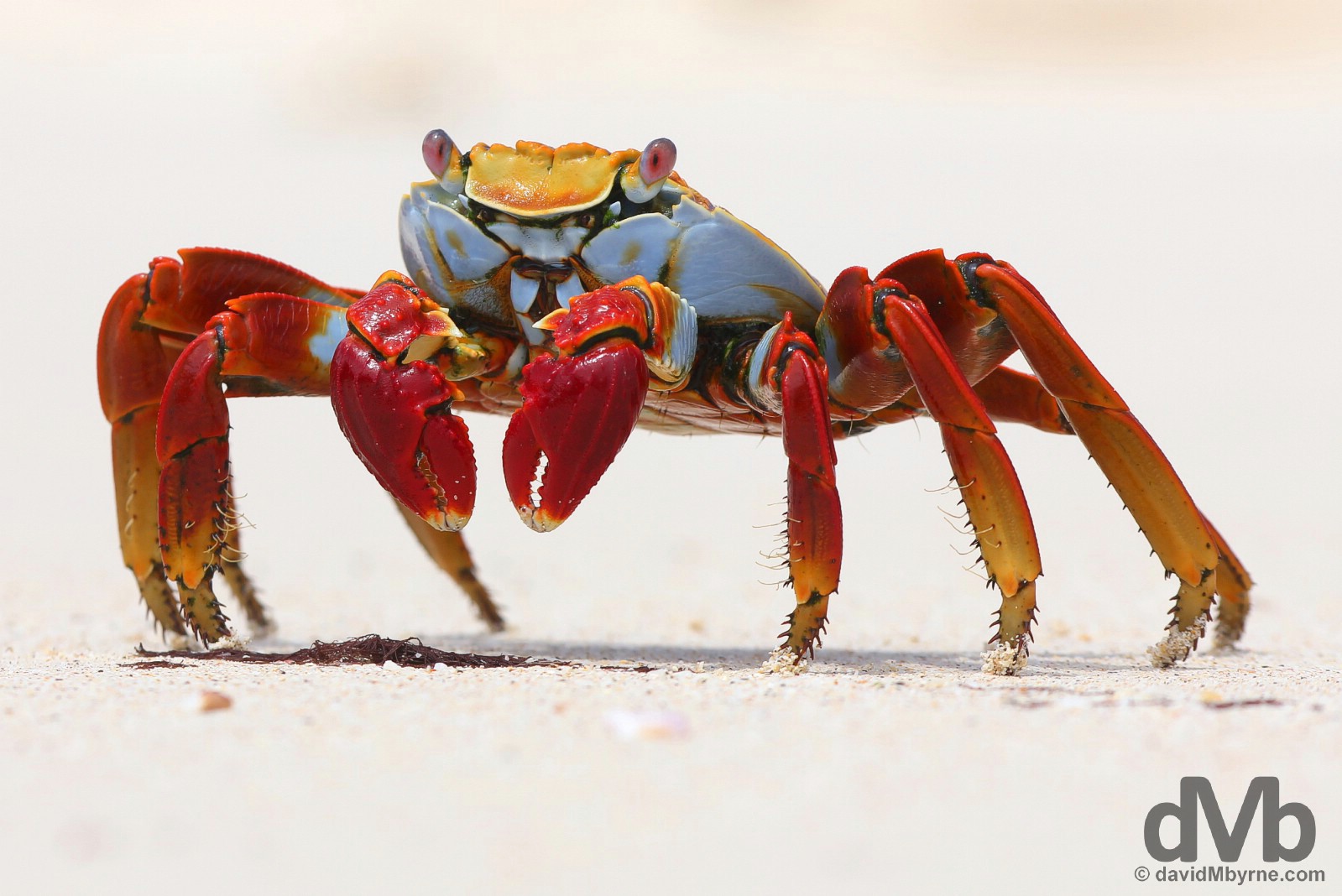
Sallylightfoot Crab Galapagos Worldwide Destination Photography
Sally Lightfoot crabs, scientifically known as Grapsus grapsus, are a species of colorful crabs commonly found along the rocky shores of the Galapagos Islands. These crabs have a vibrant appearance. Their bodies display a striking combination of red, orange, yellow, and blue colors, making them a visually captivating species.

Galapagos Sally Lightfoot Crab Eats a Snack
Sally lightfoot crabs have is a typically shaped crab with a shell that grows three-five inches long, five pairs of legs, and two small, blocky claws on the front two legs. The non-clawed legs are flat, broad, and tipped at the ends. This shape allows the crab to run and jump quickly in all four directions.
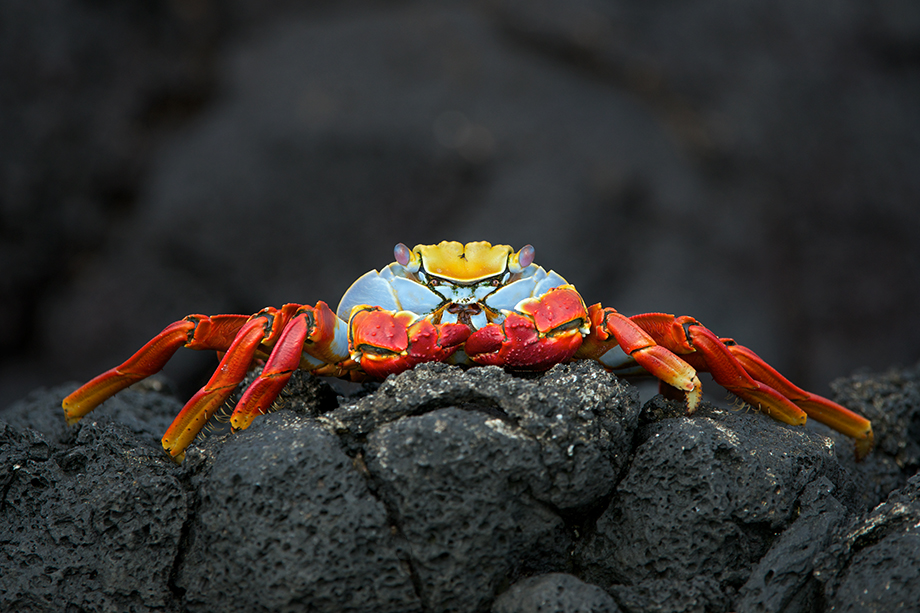
Sally Lightfoot Crab Sean Crane Photography
Sally Lightfoot crabs are colorful and fascinating creatures. They were one of the highlights of our Galapagos trips - and are easily one of the most common animals in the Islands. Table of Contents Sally Lightfoot Crab Overview Latin name (s): Grapsus grapsus

Graspus Graspus Sally Lightfoot Crab Matt Tilghman Photography
Sally Lightfoot crabs (Graspus graspus) are commonly found along the Pacific coast of Central and South America, including the Galápagos Islands where this photograph was shot.It is believed that these crabs are named after a Caribbean dancer as they have the ability to climb vertically, run in four directions, and swiftly jump across rocks.
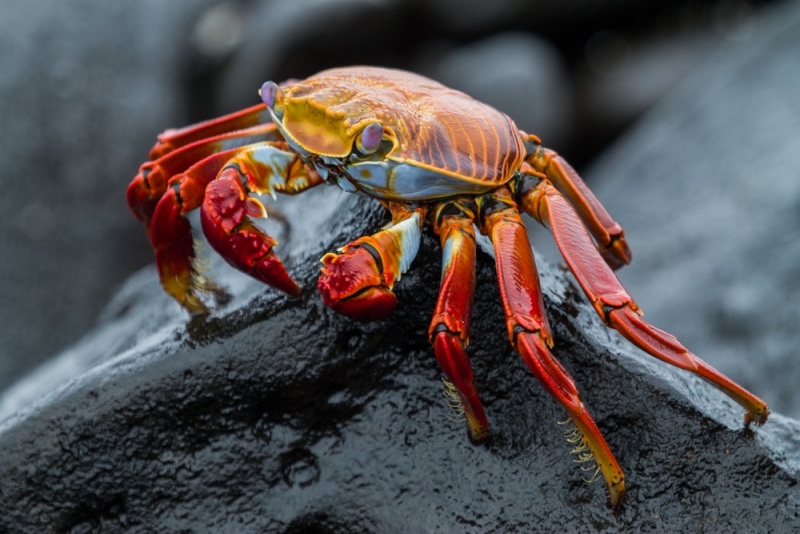
Sally Lightfoot Crab "OCEAN TREASURES" Memorial Library
Overview Sally Lightfoot crabs are brightly-coloured coastal scavengers, found in the Galapagos Islands and across the western coast of South and Central America. They have an extremely generalist diet, feeding on anything from sea lion placenta to other crabs.